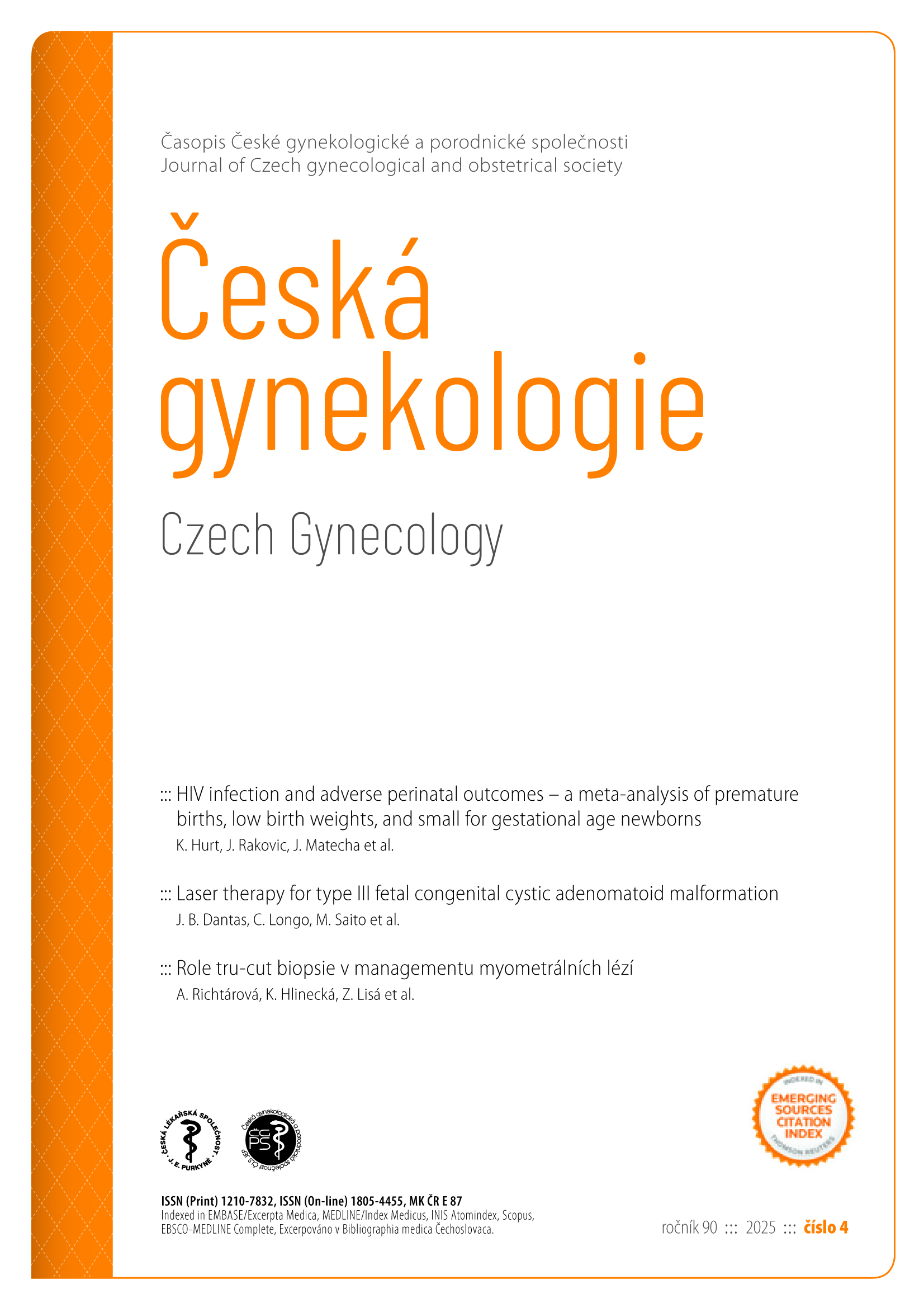Hematological parameters and colposcopic lesion area in precursor lesions of cervical cancer
Keywords:
high-grade squamous intraepithelial lesion, blood cell count, colposcopy, human papillomavirusAbstract
Objectives: To evaluate whether there is an association between the colposcopic lesion area and hematological parameters in patients with cervical intraepithelial neoplasia (CIN) 2/3. Material and methods: Women with CIN 2/3 were included in the study (N = 62). Colposcopic lesion area was measured by Image J software. Genotyping for human papillomavirus (HPV) 16, 18, 45 and 52 was performed by PCR. Hematologic parameters were evaluated. Results: The cut-off value of monocytes was ≤ 490.77/mm3, with a sensitivity of 92.3%, and a specificity of 44% (AUC = 0.662; P = 0.048). For red cell distribution width (RDW), the cut-off value was > 12.9%, with a sensitivity of 84.6% and a specificity of 55.1% (AUC = 0.661; P = 0.028). In univariate analysis, monocyte count ≤ 490.77/mm3 and RDW > 12.9% were associated with a colposcopic area > 0.88 cm2 (P = 0.035; P = 0.015, resp.). After multivariate analysis, considering the cofactors age, CIN grade, smoking and HPV type, only RDW remained independent factor OR (95% CI) = 12.825 (1.348–121.971), P = 0.026. Conclusion: Monocyte count and RDW are associated with the lesion colposcopic area. The blood count is a simple, minimally invasive and inexpensive test, associated with the growth of precursor lesions of cervical cancer, and may, in the future, have the potential to be used in the public health system.


